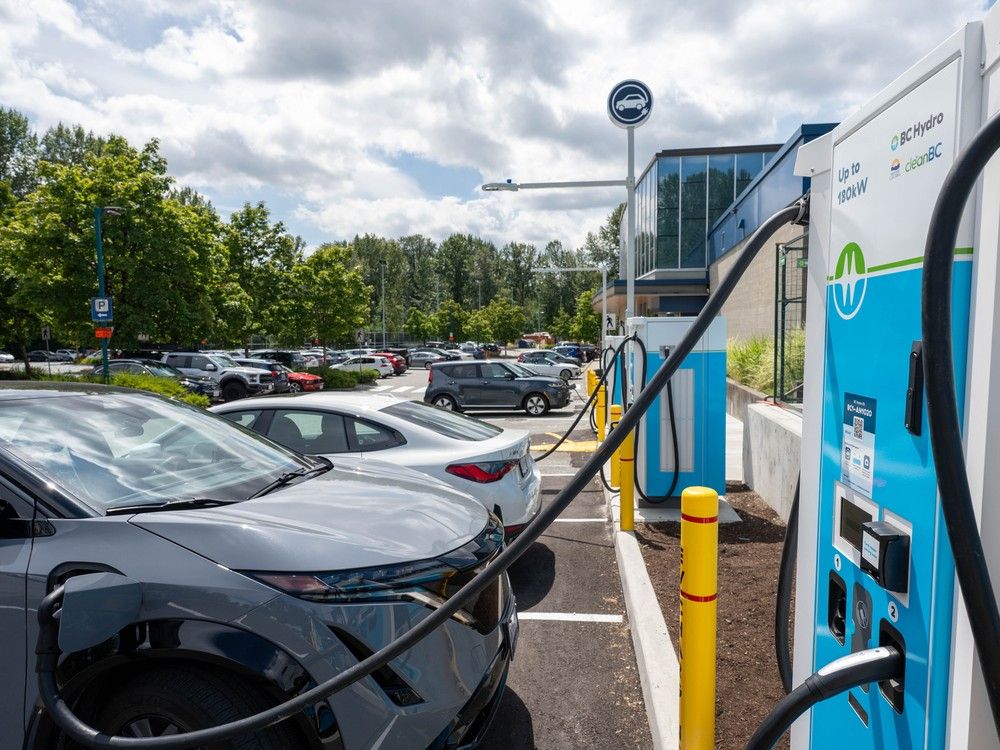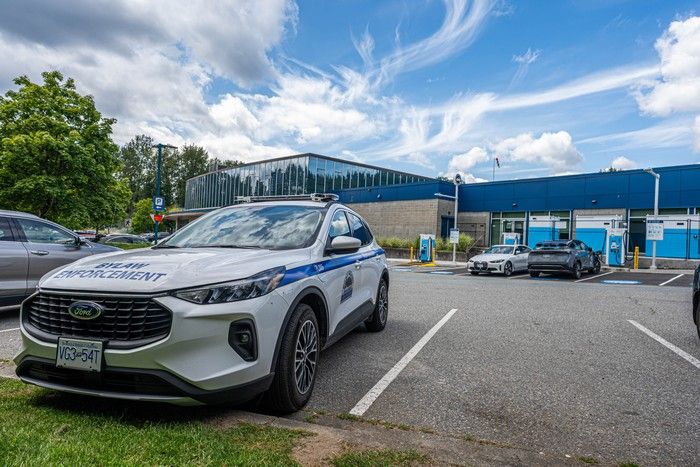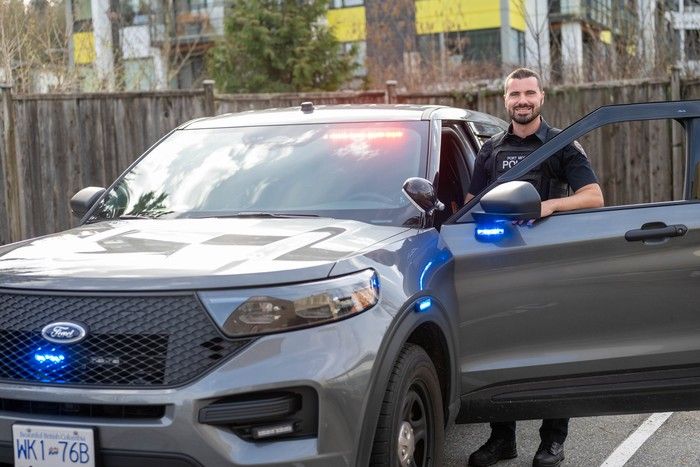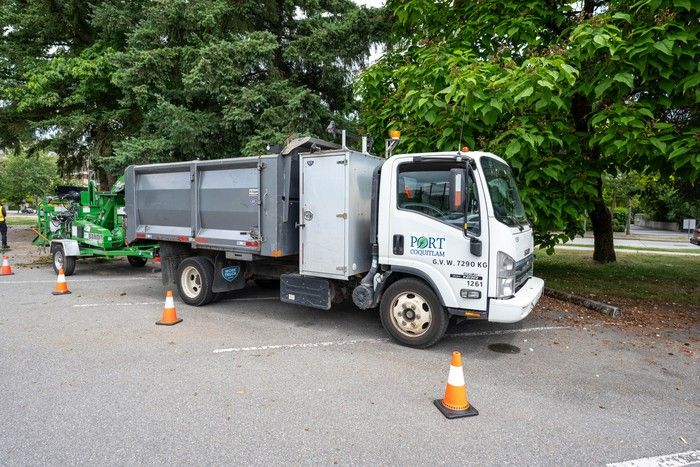
Uncertainty follows recent changes to the federal climate policy as the B.C. government continues to double down on provincial carbon-emission targets.
A lack of electric vehicles, inadequate infrastructure and the colder Northern climate will leave hundreds of light- and heavy-duty vehicles used by governments burning fossil fuels past current target dates.
Last month, Prime Minister Mark Carney announced Ottawa would pause its 2026 electric-vehicle sales mandate for at least a year, adding his government is focused on “results, not objectives.”
The scrapping of the consumer carbon tax in March and the announcement on the EV mandate are a major policy shift from the Trudeau government’s 2021 law that set transparency and accountability measures to reach net-zero greenhouse gas emissions by 2050.
B.C. adopted a more aggressive strategy, placing restrictions on the sale of new combustion-engine vehicles. The first target mandates 26 per cent of all new light-duty vehicles sold in B.C. must be zero-emission vehicles, or ZEVs, by 2026. That climbs to 90 per cent by 2030 and 100 per cent by 2035.
“EV sales have dropped from nearly 25 per cent in mid-2024 to just 15.4 per cent this past June,” said Blair Qualey, president of New Car Dealers Association of B.C. “The federal government has made a responsible and realistic decision in pausing its zero-emission vehicle mandate, recognizing that ambitious quotas without affordability measures simply don’t match today’s market conditions.”
Kyle Donaldson of B.C. Hydro estimates there are close to 210,000 light-duty passenger EVs in the province, and in the next 10 years expects that number will reach more than 700,000, even after the federal announcement.
The Ministry of Energy and Climate Solutions confirmed in an email that “medium- and heavy-duty ZEVs do not have sales requirements.”
Natural Resources Canada is one department making progress transitioning to EVs. From 2023 to 2024, the department tripled battery-electric vehicles with purchases rising from 63 to 186. The process must be completed by 2030, according to Shireen Ali, communications adviser at the department.
A Statistics Canada report in January said 20.7 per cent of new vehicles sold in B.C. in 2024 were electric. That rate suggests the province will fall short of its target of 26 per cent in 2026.
Adrian Dix, B.C.’s minister of energy and climate solutions, says the province is still leading the way for EV sales in Canada.
“B.C.’s still No. 1 … in EV sales. And that is a good reflection of where people in B.C. are,” he said on Sept. 5.
Dix didn’t commit to a pause similar to Ottawa’s. “The federal government paused its policy target for 2026 and is doing a review. We’ve been encouraging them to become aligned with us, or us more aligned with them for some time.”
Dix said an announcement will be made soon.
Lack of suitable EV options
Law enforcement agencies say existing electric vehicles do not meet their operational needs for range and the terrain in some areas.
A statement by the Ministry of Environment noted “electric vehicles at this time do not meet the specific needs for patrol vehicles.” However, in its light-duty vehicle purchases, the ministry is “committed to achieving 100 per cent light-duty ZEV acquisition by 2027.”
Martin Potvin, a spokesperson for the Treasury Board of Canada, said there has been “good progress” in switching to electric vehicles, but added that is only possible “where ZEV options exist.”
Jaedon Cooke from B.C. Wildfire Service said it has some EVs and hybrid vehicles, but they can’t be used for demanding work on the fire line or for fire suppression. EVs are typically used in towns, on the highway and, occasionally, on light forest service roads.
“Due to the remote nature of much of our field work, EVs are not suitable, as the battery range is insufficient for effective use,” Cooke said.
Natural Resources Canada also requires that zero-emission vehicles be operationally suitable. If not considered appropriate, staff must explain why and specify which zero-emission vehicles were considered and why they were not suitable.
Potvin said “federal fleet-owning departments are working together to evaluate the costs and benefits of ‘greening’ fleet operations.”
A B.C. government document revealed B.C. government ministries spent nearly $1.5 million on fuel for larger Ford F-250 and F-350 pickups in 2023. These North American-made trucks are the primary vehicles used by conservation officers — and are among the greatest sources of greenhouse gases compared to smaller light-duty passenger vehicles.
According to CO2Everything.com, an environmental calculation website, F-250s and F-350s emit about 5.3 to 8.9 kilograms of carbon dioxide an hour, while an F-150 emits 2.6 to 5.3 kilograms of CO2 an hour.
Ford has no electric versions of its F-250 and F-350 models.
EV adoption has flattened
EV sales trended down in April, declining 28.5 per cent from the same period in 2024, according to Statistics Canada.
“The early adopters, corporately or individually, have all come and gone,” said Qualey. “Everybody else asks, ‘How much is this going to cost me? How far is it going to go? Where am I going to charge it? Are we going to have enough electricity?’”
Ford Canada lists the price of an all-electric F-150 at close to $63,000, about $10,000 more than the gasoline equivalent.
B.C.’s Ministry of Energy and Climate Solutions recognizes the reduced ZEV adoption this year, citing various factors, including the trade war with the U.S. Other factors are “pricing reaction from automakers following the removal of federal ZEV rebates,” and fewer ZEV models offered by manufacturers.
Rebate programs established to ease EV adoption anxiety have ended or will be ending before 2026, Qualey said.
He said rebates encouraged people to put their toe in the water around an electric vehicle,” said Qualey. “They’ve just turned the taps off on all of those, both the federal government, and now the provincial government has taken away or announced the end of, or pausing of, these rebates.”
Canada has some of the lowest profit margins on EV sales in the world, further reducing manufacturers’ ability to supply the Canadian market, according to the Canadian Automobile Dealers Association.
Unlike rebates offered by B.C. and Ottawa to the public on new and used electric vehicle purchases, many government agencies, including police have not been eligible for rebates.

EVs are great in urban areas, Qualey said, but for those in places like Nelson or Prince George, where people have to do a lot of driving, sometimes in colder weather, “it’s not an easy decision for folks like that to just go full electric.”
“(If) people don’t want to buy them, you’re going to have to shrink the supply of gas vehicles to the province … what we saw during COVID was, you shrink the supply of vehicles, the prices of both new and used go through the roof.”
EVs often not viable for police use
“It would be difficult to go fully electric,” said Const. Sam Zacharias, Port Moody Police media relations officer. “The infrastructure just isn’t there. Often the vehicles are in continuous use for over 24 hours.”
Cpl. Nancy Saggar, media relations officer for the Victoria-area West Shore RCMP, said charging times are lengthy, so officers must return to the station several times a day to plug in EV patrol vehicles.
Staff Sgt. Lindsey Houghton, senior media relations officer for the Surrey Police Services, said that in a 10- to 12-hour shift, vehicles might be driven 150 to 300 kilometres, sometimes up to 500 kilometres.
Houghton said 10 per cent of the Surrey fleet is Ford Explorer hybrid interceptors. Surrey police don’t have any fully electric vehicles.
Port Moody police bought two all-wheel-drive Ford Explorer hybrids in December, a first for the city. They are now being tested in both emergency and non-emergency situations.
“We’re going to see how these go,” said Zacharias.
West Shore RCMP has had a pilot program since 2022, testing three models of electric vehicles. They have a Ford Mustang Mach-E, a Ford F-150 Lightning, and a Tesla Model Y.
The detachment was selected for the pilot project because the temperate climate on Vancouver Island requires fewer battery charges.

Infrastructure challenges complicate transition
Qualey said cold temperatures in the North and Interior pose a challenge to meeting government net-zero targets. “Temperature is known to impact the life of batteries, both excess of cold and heat, and it can reduce the amount of range you get from the battery.”
Infrastructure challenges and limited EV options for heavy-duty work vehicles further complicate the transition.
Canada would have to build more than 23,000 kilometres of high voltage transmission lines to meet Canada’s net-zero targets by 2050, says the 2025 Canadian Automobile Dealers Association report.
The B.C. government website lists more than 5,000 public charging stations in B.C., an increase from about 1,500 in 2019. BCAA puts the number closer to 5,300. That means there is one public charging station for every 27 EVs on the road.
Donaldson adds: “In the past year alone, B.C. Hydro has tripled the size of its public charging network, adding 418 new charging ports. B.C. Hydro’s provincewide fast-charging network currently includes 595 charging ports at 144 sites in communities throughout B.C.”
It will expand the network to 800 by 2026.
Each charging port costs about $190,000. Donaldson said funding to install and maintain fast-charging stations comes from a variety of sources, including the provincial government, Natural Resources Canada and the revenue from the electricity sold at the station.
But the dealers association report said that at the current rate of public charger installations, Canada will be 50 per cent behind what was initially forecast by the end of 2025.
“The estimated growth required for the Canadian power grid to be green and support full electrification is $1.7 trillion,” it said, adding Canada would need to more than triple its power generation capacity to meet its full electrification targets.
Qualey also said there are questions of whether there will be enough power supply in Canada to meet provincial and federal targets for electrification: “That’s the multimillion-dollar question for our industry. Quite frankly, I think governments are asking themselves that question now.”
But Donaldson says B.C. Hydro has “carefully planned for the influx of EVs on B.C. roads,” and has included “electric vehicles in its load forecast since 2011.”
Donaldson confirmed that 98 per cent of the electricity that B.C. Hydro generates comes from renewable sources.
By B.C. Hydro’s estimates, energy demand for EVs will require 1,300 gigawatt hours or two per cent of the total energy demand by 2030, doubling the current level of EV demand.
“The current demand for electricity to support electric vehicles in B.C. is less than one per cent of the province’s total energy demand,” Donaldson said.
Expanding the grid to meet the needs of electrification comes at a cost to taxpayers. According to Statistics Canada, the price of electricity has risen 32 per cent in the last decade.
Slowdown of EV sales
Despite challenges, governments remain optimistic about their adoption of light-duty EVs.
The Treasury Board’s Potvin said in an email: “Through the greening government strategy, starting 2025, 100 per cent of conventional fleet purchases are to be zero-emission vehicles to achieve the target of 100 per cent ZEVs by 2030. This 100 per cent target applies where one or more suitable options per vehicle group are available, and it also considers operational feasibility.”
In a followup email, the Treasury Board said these targets remain unchanged after the announcement by the prime minister.
Dix said B.C. is committed to making EVs more affordable and improving the charging infrastructure in the province.
Approximately 1,171 light-duty combustion-engine vehicles across 17 federal government departments are ready to be replaced with zero-emission vehicles. This transition is projected to save an estimated $8.7 million on fuel and maintenance over a seven-year period, but will be offset by the higher purchase price for electric vehicles.
The Treasury Board requires departments to establish internal policies for the procurement and use of ZEVs. Departments must lay out cost projections for vehicles, consider operational feasibility, and optimize fleet size.
The B.C. government has no plans for transitioning medium- and heavy-duty vehicles to EVs — even though it has been done elsewhere.

Simone Mangili, executive director of the Carbon Neutral Cities Alliance, said many countries have proven that heavy-duty vehicles can be electrified, citing several European cities.
The alliance includes cities, including Vancouver, working toward achieving an 80 per cent cut in greenhouse gas emissions by 2050.
“We’ve seen major progress with EV waste-management-hauling vehicles and the lighter-duty vehicles such as ambulances and trucks,” Mangili added.
In addition to a smaller-than-expected EV market in Canada, strained relations with the U.S. have created economic uncertainty, said Houghton. Tariffs have had a dampening effect.
In November, Ford announced a temporary pause in building F-150 Lightning EVs, citing slower-than-expected sales.
Also, less than a year after Honda Canada announced the building of an EV battery plant and retooling of a vehicle assembly facility in Ontario, construction has been postponed for at least two years due to a slowdown in the EV market. The EV sales ratio in 2030 is now expected to fall below the previously announced target of 30 per cent.
That illustrates the complexity of implementing zero-emission targets.
“It’s going to be tough to meet these very aggressive, tough targets that B.C. set for itself, the most aggressive in North America,” said Qualey. “And we’re just a small little market in the big global picture.
“It’s a big issue that’s not going to be solved overnight.”
BW Homer is a 2025 recipient of the Langara College Read-Mercer Journalism Fellowship. This feature was produced through the Fellowship.